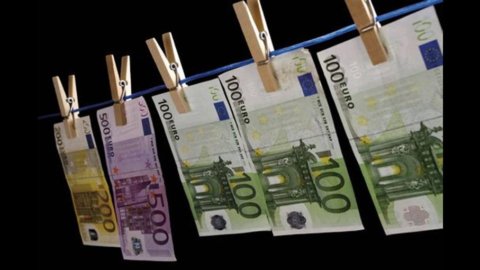The euro does not inspire confidence in the world's major investment banks. And not even many Italians. Of the world's 17 largest banks, 10 have reduced their guidance on the euro in recent months, not foreseeing a recovery of the single currency in the short term. On average, the analysts of the financial giants predict that the euro will reach $1,20 at the end of 2012, 0,04 percentage points less than the $1,24 expected in July. For June 2013, the estimates are even darker: the euro will fall to 1,19 dollars (from 1,21 in the last analysis).
Bank of America-Merill Lynch it was the cruellest. The American Investment Bank ha cut the euro's year-end outlook to 1,15 dollars from the previous 1,30 dollars. Goldman Sachs, Bnp Paribas and HSBC were instead more optimistic, with Goldman che it cut its third quarter estimates to $1,25 from $1,33 and that he expects a slight recovery if the European Union manages to implement adequate measures to save the Eurozone economy. According to Goldman, the single currency will rise to $1,33 by the end of 2012 and to $1,40 by June 2013.
The fears of the financial sharks come from the peripheral countries of the EU. From the Spain worries the possibility of a rescue of the whole country, of Greece's exit from the Eurozone (for Citigroup there is a 90% probability that this will happen in the next 12-18 months), Italy's increasingly high debt (is that in June it hit a new record). Nor should the possible be underestimated capital flight from the Eurozone, which would happen above all if Germany were forced to bail out the weakest states, thus losing the attractive safe haven of the euro.
The problem of capital flight which seems to have already begun in Italy. As reported in an article in the Corriere della Sera, 500 euro banknotes are becoming increasingly rare in our country precisely because they are taken "safely" to neighboring foreign countries: Switzerland and San Marino first and foremost. In fact, one million euros in 500-euro notes weighs "only" 1,6 kilos against the 10 kilos that would weigh in 100-euro green cards. In its annual report, the Bank of Italy had already warned that the use of 500 euro banknotes could be a "potential money laundering tool" and for this reason it would be better to limit their circulation.
More than the Swiss francs, however, the large investment banks prefer it the Australian dollar. In fact, theYear-end estimates for this currency were revised to an average of $1 from $0,98 previously. Investors are tempted by the triple A rating and sovereign debt yields, which are decidedly more attractive than those of the United States or Japan. However, the ghost of a slowdown in Chinese growth to which the Australian dollar is linked hovers over Canberra. Yet the markets are more confident about the Asian giant's GDP: the Chinese slowdown is still much less scary than the crisis in the Eurozone.





